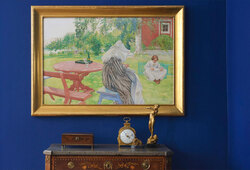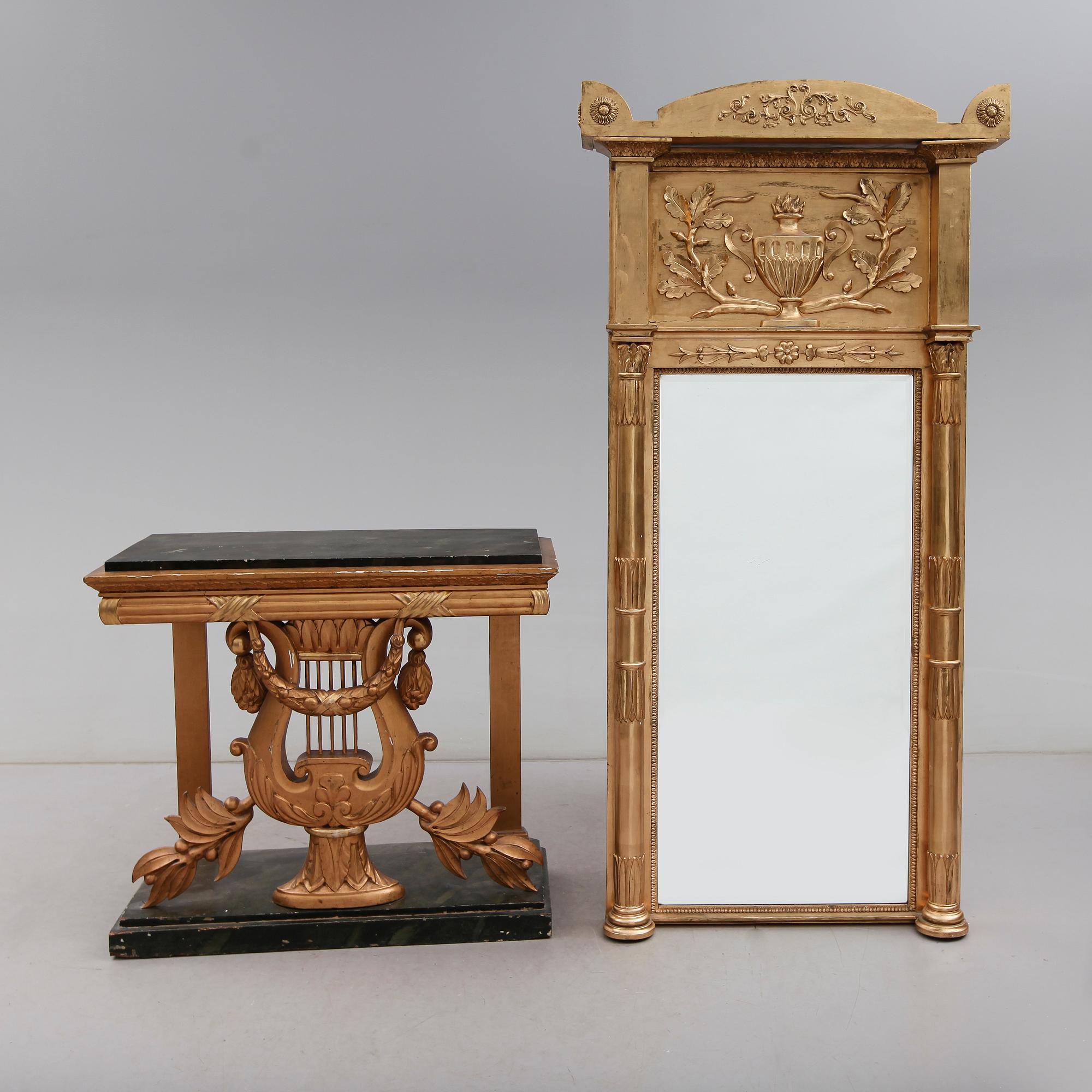Empire
SPEGEL MED KONSOLBORD, empire, 1800-talets första hälft.
Förgylld och bronserad. Konsolbord med marmorerad skiva. Uppburen av lyra, dekor av girlander. Marmorerad fotplatta. Spegel med skuren dekor av urna och löv. Fristående kolonner. Fasettslipad glas. Spegelns bredd 76. Höjd 177 cm. Konsolbordets bredd 93. Djup 41. Höjd 82 cm. Total höjd 259 cm.
Repor och märken. Konsolbordets fotplatta något avkortad baktill. Färgbortfall. Delvis ombronserad. Löst krön. Senare glas.
Designer
The Empire style lasted roughly between 1810 and 1840 and is primarily considered an interior design style. The style is characterised splendor and pomp and is sometime known as imperial. The French empire is often associated with Napoleon Bonaparte of France who was highly interested in ancient Rome and its attributes. Egyptian elements with sphinxes, palmettes, eagles, griffins, and masks were common as decorative elements. The most common wood was mahogny and burnished gilding was popular. Chiffonier were popular furniture items during the empire and seated durnitres were dressed in light, bright colours. The 1830-40s is known as the Late Empire and was more bourgeois. In Germany and Austria, the style was known as biedermeier and was identified by furniture with softer lined made out of birch. The Empire style came to Sweden with Jean Baptiste Bernadotte (King Karl XIV Johan) afterwhich was known as "Karl Johan". The Swedish style was lighter and less majestic.
Read more






































